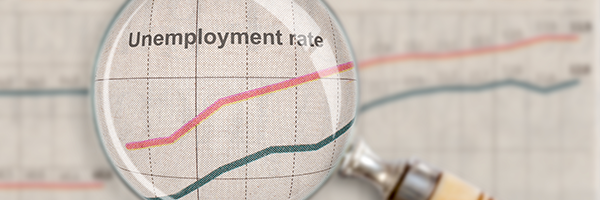 April 20, 2025
April 20, 2025
What You Need to Know Today:
Wall Street still in denial on tariffs
Futures markets are substantially lower as U.S. stocks get ready to open. Futures on the Standard & Poor’s 500 were down 1.64% and NASDAQ futures were off 1.87%. But I still say that Wall Street is in denial about the full economic damage from President Donald Trump’s tariffs.

Watch my new YouTube video: Rally to continue through December; but I’m worried about January
Today’s video is Rally to Continue Through December; I’m Worried About January. While I recorded this video on November 5 (before the election results), I still believed we were looking at a rally through the end of the year. Looking at the patterns of earnings and cash flow, and with the election complete, we’ll continue with this upward movement until January. Generally, rallies happen every December as money managers look to buy to “window dress” their portfolios at the end of the year. Now that the election is over, any pre-election hedges will turn into more cash entering the market in December. Fourth quarter earnings will likely be the best of the year but the problem is that 2025 will not see as much earning growth as 2024. Likely, in January, companies may issue negative guidance for the year ahead. I don’t expect a depression or recession, but I do think we’ll see a slow down/pull back and we’re certainly due for 5-10% correction. Continue to ride the wave through December, and then look to make some profits in January. Selling in the new year will also mean you don’t have to take the tax hit this year

Get ready for the Trump tax cuts–in the first 100 days of the new administration
President-elect Donald Trump and Republican Congressional leaders are already promising to push through a new round of tax cuts to replace the 2017 cuts that expire in 2025. New tax cuts, they say, will be the first legislative–as opposed to initiatives by executive order such as new Trump tariffs–priority after the new president is inaugurated on January 20 2025. With Republican assured of a 53 to 55 seat majority in the Senate and likely to retain a majority in the House of Representatives, there’s not much Democrats can do to stop the cuts from becoming law.

Hot Button Moves NOW: Watch for my solutions to the yield drought
Today’s Hot Button Moves NOW video is “Yield Drought.” CDs that used to pay 5.25% are now paying closer to 4.90% on the high end and Treasuries yields are also falling. As stock prices rise, dividend yields fall to. I think this yield drought will continue to get worse. You have to be opportunistic and BE ready for bouts of volatility. Keep an eye out for temporarily depressed stocks and buy those for the yields. I’ll be releasing a special report on dividends and yield drought next week. Keep an eye on your email or subscribe to get alerted when that report drops.

Fed sticks with a 25 basis point interest rate cut; but uncertainty seems to be a rising worry
The Federal Reserve lowered interest rates on Thursday by a quarter of a percentage point. The cut was the second this year, following on a larger than usual 50 basis point cut in September. The size of this cut was expected by the financial markets. Wall Street is expecting another 25 basis point cut at the central bank’s December 18 meeting. With the cut and its size so widely expected investors and traders were left trying to find policy hints in the Fed’s words. The pickings were rather slim.

Updated Special Report “11 Trump winners and 5 Harris/Trump losers”–first loser picks after Trump’s win
When I posted the previous version of this Special Report back on September 30, I wrote: “I don’t know which candidate will win the election. Right now the polls are within the margin of error on the national level–and even tighter in the seven battleground states that will likely decide the election. But I do know the results on November 5 will move stocks. Some right off the bat even before the results are certified. And more significantly as a new administration clarifies its policy views and takes office.” That has changed just a bit with last night’s victory by Donald Trump. We do know who won and will be the President come January 20. And we do know whose policies will move stocks and the financial markets in general. So let’s see if I can bring my picks and strategic advice up to date.

Special Report: 10 Contrarian Bargains to Buy Now–My first 3 picks are Luminar, Nidec, and Barrick
a lot of individual stocks are cheap right now, I’d argue. 180 of the 500 stocks in the S&P 500 trade now at the same or lower price that they commanded a year ago. And for many individual stocks the performance is even worse. For example, Luminar Technologies (LAZR), a maker of LIDAR safety and navigation equipment for cars, is down 40% in the last three months. Albemarle, the world’s leading supplier of lithium, is off 27% in the last three months. Nidec (NJDCY), a Japanese maker of small electric motors and electric vehicle drive trains, is down 13% in the last three months. I’d argue that these and the rest of the 10 Contrarian bargain stocks that I’m going to recommend in this Special Report share a number of characteristics that have led to their losses over the last few months or longer.
Live Market Report (20 minute delay)

Move #5 in my Special Report: 5 Moves for the Next 5 Months
I will add this last 5 Moves for 5 months post to the end of my post of the entire Special Report today. I’m also posting it here, however, as a stand-alone so you will get notice in your email box that Move #5 has gone up. Here’s what I will post for Move #5.

Rising consumer expectations on inflation NOT good news for the Fed
U.S. households project that inflation a year from now would stand at 4.7%, versus February’s 4.2%, according to the most recent survey from the New York Federal Reserve Bank. This was the first increase in year-ahead expected inflation since October.

PC sales didn’t fall in Q1;: they plummeted with Apple leading the way down
Shipments by all PC makers slumped 29% in the first quarter to a level below that in early 2019, according to tech market analysts at IDC. Lenovo Group and Dell Technologies registered drops of more than 30%, while HP (HPQ) was down 24.2%. No major brand was spared from the slowdown, with Asustek Computer Inc. rounding out the top 5 with a 30.3% fall. But Apple (AAPL)let the plunge with personal computer shipments down by 40.5% in the first quarter.

More evidence of a credit crunch–bank lending drops
Lending by U.S. banks contracted by the most on record in the last two weeks of March, according to the Federal Reserve’s latest H.8 report. Commercial bank lending dropped nearly $105 billion in the two weeks that ended March 29, the most in Federal Reserve data back to 1973. A more than $45 billion decrease in the latest week was primarily due to a drop in loans by small banks. But big banks weren’t immune. The Fed’s report showed that lending decreased $23.5 billion at the 25 largest domestically chartered banks in the latest two weeks, and plunged $73.6 billion at smaller commercial banks over the same period.

Saturday Night Quarterback says, For the week ahead expect…
Look for a disconcerting CPI inflation report for March on Wednesday, April 12. The headline, all-items inflation rate is expected to drop to an annual rate of 5.2% from 6%, according to economists surveyed by Bloomberg. That would be good news for the Federal Reserve’s effort to lower inflation. Except that economists expect the core Consumer Price Index inflation rate, which excludes more volatile energy and food prices, to rise to an annual rate of 5.6% from 5.5%. And the core rate is the inflation rate that the Fed watches.

Rumors swirl around Pioneer Natural Resources again–this time that ExxonMobil is talking about an acquisition
The Wall Street Journal reported today, Friday, April 7, that Exxon Mobil (XOM) has held preliminary, informal talks with Pioneer Natural Resources (PXD) about a possible acquisition.

Economy adds 236,000 jobs in March–Economists worry, Is this the slowdown before the plunge?
U.S. payrolls rose by 236,000 in March. That was in line with forests from economists surveyed by Bloomberg. (The Bureau of Labor Statistics revised its February report upward to show 326,000 jobs added in that month.) The official unemployment rate slipped to 3.5% from 3.6%. Average hourly wages increased at a 4.2% rate year-over-year. That was below estimates and the slowest growth since June 2021. The lower total for new jobs in the month is better than a poke in the eye with a sharp stick for investors hoping that the Federal Reserve will decide its job is done and end its interest rate increases after one final 25 basis point increase at the Fed’s May 3 meeting. But the market read today was that the drop isn’t big enough to convince the Fed.

Move #4 in my Special Report: 5 Moves for the Next 5 Months
I will add this post to the end of my post of the entire Special Report today. I’m also posting it here, however, as a stand-alone so you will get notice in your email box that Move #4 has gone up. Here’s what I posted for Move #4.

Ahead of tomorrow’s jobs report, initial claims for unemployment signals some softening in labor market
Applications for U.S. unemployment benefits last week were a stronger than expected 228,000, the Labor Department reported today. The department also revised the numbers from the week before to 246,000, up by 48,000 A separate report Thursday showed job-cut announcements from U.S.-based employers rose 15% in March from the prior month, marking the highest first-quarter total since 2020, according to Challenger, Gray & Christmas, Inc.

Please Watch My New YouTube Video: The Problem With Goldilocks
Today’s topic is The Problem With Goldilocks. This Goldilocks market is dependent on three things: there will be no recession, interest rates will stabilize after one more May hike from the Fed, and we’ll get falling inflation. These three factors are necessary for the porridge to be not too hot and not too cold. The problem? I don’t see how these three factors exist simultaneously. Falling inflation but no recession? I don’t see how we get to lower inflation without something at least close to a recession. I think we need a recession in order for the Fed to stop rate hikes. Oil isn’t helping the situation as OPEC+ voted to cut oil production for a year, and energy-reliant stocks are already showing the effects. Energy prices don’t immediately factor into the Fed’s decision-making, since the Fed focuses on core inflation, which excludes oil and food, but eventually, oil prices affect the market as a whole. Goldilocks may not be in immediate danger of being eaten by the bear, but I wouldn’t sell her an insurance policy.

Video post buy: Devon Energy
Just in case there are readers who don’t watch my videos, but do follow my picks. Today, April 5, I added Devon Energy (DVN) to my Jubak Picks, Dividend, and Volatility Portfolios.

Please Watch My New YouTube Video: Quick Pick Devon Energy
Today’s Quick Pick is Devon Energy (NYSE: DVN). On Sunday, OPEC+ said it’s going to cut oil production by about 1 million barrels a day. The following Monday saw a surge in oil prices. My take on this? If you’re going to bet on oil, do it now, before the question of whether or not we’ll have a recession starts to hang over the sector. Devon Energy has a similar playbook to Pioneer Resources, a stock I already own. Devon has introduced a variable dividend (50% of post-dividend cash flow) alongside their set dividend payout. About 70% of Devon’s resources are in the Permian Basin, the lowest-cost oil resource in the U.S. oil shale sector. At the moment, the forward yield is about 9.4%, but it is variable and could go up and down. If oil prices continue to go up and Devon decides to produce more oil, cash flow will go up with it. I’ll be adding this to three of my portfolios–Jubak Picks, Dividend, and Volatility to get one more bump in this commodity before we start to worry about an upcoming recession.

Nope, the regional bank crisis isn’t over: Enter Western Alliance Bancorp
Shares of Western Alliance Bancorp (WAL) were down 15.45% as of 10.00 a.m. New York time today, April 5, as the Whac-A-Mole regional bank crisis continues. The shares are down 50% in 2023. The bank updated its financial disclosures Tuesday–this is the fourth update since March 10 so there’s enough smoke here to make investors worried that there might be a fire–without providing more detail about deposit balances at the bank. The lack of deposit data stood out to bank analysts because the previous three updates included that information.

Gold pushes toward all-time high
Gold for June delivery closed at 2039.00 an ounce on the Comex today. That’s not too far away from the all-time record high of $2,070 an ounce. The move above $2,000 an ounce and any breach of the record at $2070 could trigger a rally as traders short gold buy to cover positions. That could well be true, but I’d note that this forecast of a gold rally is coming from traders long gold who are trying to talk a rally into being.

Job openings slide, but labor market is still too hot for the Fed
The Labor Department’s JOLTS (Job Openings and Labor Turnover Survey) report this morning showed that job vacancies at U.S. employers dropped in February to the lowest since May 2021. The number of available positions decreased to 9.9 million from a downwardly revised 10.6 million a month earlier. That’s still indicative of a tight labor market,

Overreaction? $4 gas and $100 oil?
Today oil prices and oil stocks are soaring on the bullish case that the surprise OPEC+ production cut will push gasoline to $4 a gallon and oil to $100 a barrel. Not everyone buys the bullish case–at least not after a few days of what these analysts call a knee-jerk reaction. And they’ve got a point

Please Watch My New YouTube Video: Trend of the Week
This week’s Trend of the Week: A Bottom in Natural Gas? I think so. United States Natural Gas Fund (NYSEARCA: UNG) is down 50% YTD. The problem with UNG is that expectations were that Europe would be buying a lot of gas due to sanctions on Russian commodities. What happened instead was that Europe did a great job finding ways to fill in the gaps and had a fairly mild winter. On March 28, natural gas was trading at $2.08/million BTUs. At $2.50, many natural gas producers are actually losing money. That means we’re going to see companies slow down production. While inventory was down the slightest bit on March 17 from the week before, overall inventory is still way above normal for this point in the year. So right now, as we move into the summer cooling season, and while prices are depressed, it’s a good time to build positions in this commodity.

Sunday’s surprise OPEC+ sends oil and oil stocks higher Monday (with slight retreat today)
Today the prices of oil and oil stocks have soared. At 11:20 a.m. New York time U.S. crude benchmark West Texas Intermediate was up 5.37% to $79.73 a barrel. International benchmark Brent crude was higher by 5.24% to $84.08 a barrel. Among oil stocks, Pioneer Natural Resources (PXD) was up 3.53%; ExxonMobil (XOM ) was up 5.48%; Chevron (CVX) was up 3.73%; Equinor (EQNR) was up 5.91%; and ConocoPhillips (COP) was up 7.79% The U.S. Oil Fund (USO) was higher by 5.40%.

Saturday Night Quarterback (on a Sunday) says, For the week ahead expect…
Sunday’s surprise Saudi supply cut will send oil prices higher and to take a bite (your guess is as good as mine) out of the financial markets. On Sunday, April 2 (thank goodness this wasn’t announced yesterday on April Fool’s Day) OPEC+ announced a surprise oil production cut of more than 1 million barrels a day. The organization had not so long ago promised assurances that it would hold supply steady. Supply was already looking tight for the second half of the year and this round of cuts–led by Saudi Arabia’s, 500,000 barrel-a-day reduction–will send oil prices higher.

Believers in Goldilocks spin Friday’s PCE inflation report to say Fed will end interest rate increases “soon”
Friday’s PCE (Personal Consumption Expenditures) index, the Federal Reserve’s preferred inflation, measure gave believers in Goldilocks just enough to keep the fairy tale alive. The all-items index rose 0.3% in February. That works out to a 5% annual rate. The month-to-month increase was less than expected by economists surveyed by Bloomberg–who were looking for 0.4%. The core index, which excludes food and energy prices, also rose by 0.3% month to month. Again less than expected. That put the annual core inflation rate at 4.6%.



